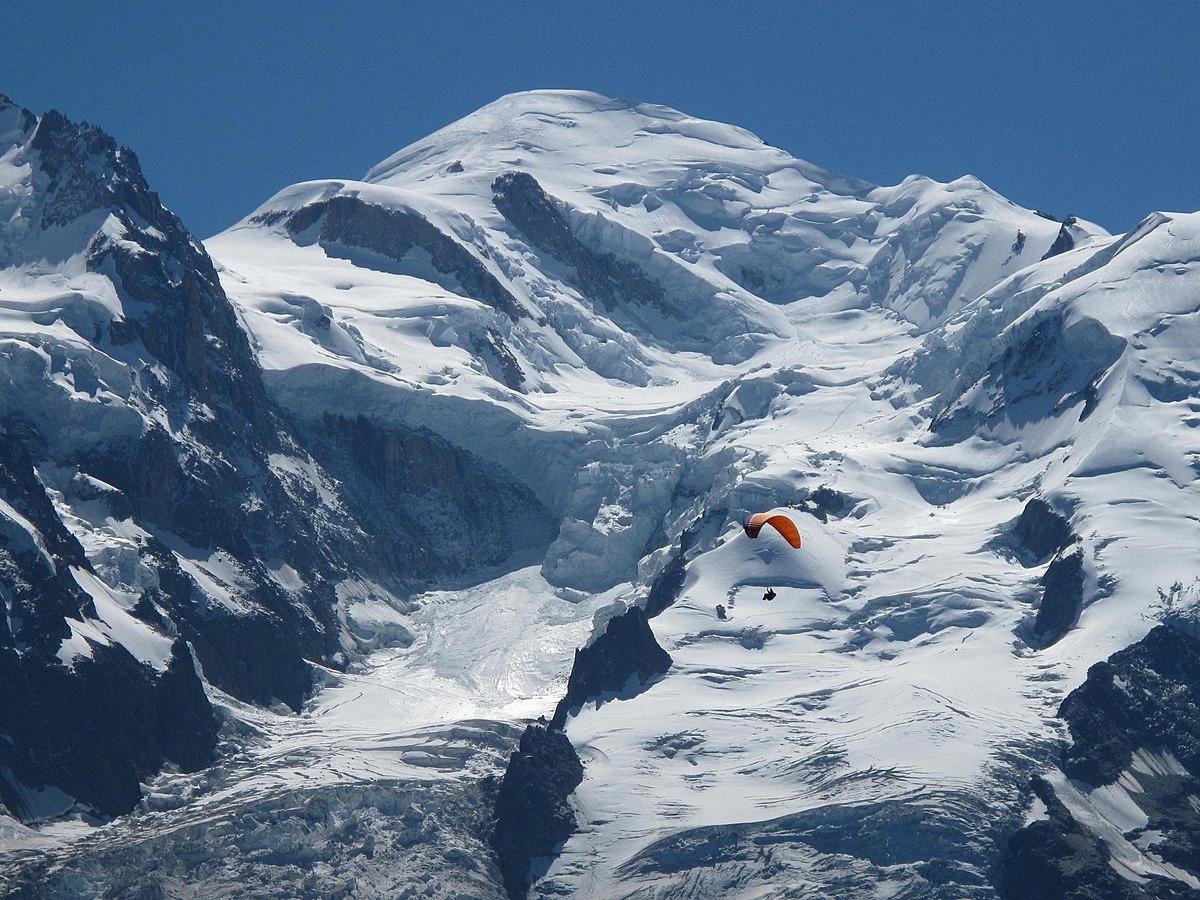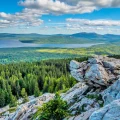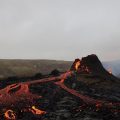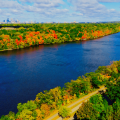Mont Blanc, also known as Monte Bianco, is a majestic peak located between France and Italy, standing tall at an impressive elevation of 15,780 feet (4,809 meters). As the highest mountain in the Alps, Mont Blanc is a true marvel of nature, captivating adventurers and nature enthusiasts from around the world.
Its name, which translates to “White Mountain,” is a fitting description as Mont Blanc is often adorned with a pristine white snow cap that remains throughout the year. This snow-capped peak adds to its allure, creating a breathtaking sight that is truly unforgettable.
When it comes to the highest peaks in the Alps, Mont Blanc proudly takes the top spot. Rising above all others, it reaches a lofty height of 4,804 meters (15,774 feet) above sea level. Its grandeur and prominence make it a symbol of nature’s power and beauty.
However, Mont Blanc is not the only remarkable mountain in the Alps. The Monte Rosa massif, comprised of several peaks, is another notable presence in this mountain range. The Dom, Liskamm, Weisshorn, Matterhorn, Dent Blanche, and Grand Combin are among the other awe-inspiring peaks that grace the Alps.
It is worth mentioning that Mont Blanc holds another significant title. It is not only the highest peak in the Alps but also the highest summit in all of Europe. Standing proud and majestic, Mont Blanc reaches an astonishing height of 4,809 meters (15,778 feet) above sea level, making it a true icon of European mountaineering.
Throughout history, Mont Blanc has captivated the climbing community, drawing adventurers and mountaineers to its challenging slopes. Its ascent marked the beginning of alpine climbing and holds a special place in the hearts of those who seek the thrill and triumph of conquering a mountain.
While Mont Blanc represents the dawn of alpine climbing, another peak in the Alps has intrigued climbers for different reasons. The Matterhorn, with its distinctive rock tower appearance, has long been seen as an unconquerable challenge. These three peaks, Mont Blanc, Monte Rosa, and the Matterhorn, have fascinated the climbing public like no other.
Mont Blanc stands as the highest peak in the Alps and in all of Europe. Its majestic presence, snow-capped peak, and historical significance make it a must-visit destination for mountaineers and nature lovers alike. Whether you choose to climb its challenging slopes or simply admire its beauty from afar, Mont Blanc will undoubtedly leave a lasting impression on all who encounter it.
What Is The Highest Mountain In The Alps Called?
The highest mountain in the Alps is called Mont Blanc, also known as Monte Bianco. Rising to a staggering elevation of 15,780 ft/4,809 m, it stands as a majestic symbol between the borders of France and Italy. The name “Mont Blanc” translates to “White Mountain,” a fitting description considering its snow-covered peak that remains visible all year round. Here are some key facts about Mont Blanc:
– Location: Mont Blanc is situated in the Alps, a mountain range that stretches across several countries in Europe, including France, Italy, Switzerland, Austria, and Germany.
– Height: At 15,780 ft/4,809 m, Mont Blanc proudly holds the title of the highest peak in the Alps. Its towering presence dominates the surrounding landscape, offering breathtaking views to those who dare to venture near.
– Significance: Mont Blanc attracts mountaineers, hikers, and nature enthusiasts from around the world. Its challenging ascent and picturesque surroundings make it a popular destination for outdoor enthusiasts seeking adventure and natural beauty.
– Climate: Due to its high elevation, Mont Blanc experiences a harsh and often unpredictable climate. The summit is covered in snow year-round, with temperatures dropping well below freezing even during the summer months. Blizzards, strong winds, and rapidly changing weather conditions are common, making proper preparation and equipment essential for those attempting to conquer its peak.
– Mountaineering History: Mont Blanc has a rich mountaineering history, with the first recorded ascent occurring in 1786 by Jacques Balmat and Michel-Gabriel Paccard. Since then, countless climbers have challenged themselves to reach the summit, leaving behind a legacy of daring feats and exploration.
– Surrounding Beauty: Mont Blanc is surrounded by stunning alpine scenery, including glaciers, deep valleys, and picturesque villages. The region offers a wealth of outdoor activities, such as skiing, hiking, and mountaineering, attracting visitors who appreciate the beauty and tranquility of the natural world.
Mont Blanc, or Monte Bianco, is the highest mountain in the Alps, standing proudly at an impressive elevation of 15,780 ft/4,809 m. Its snow-covered peak, challenging ascent, and breathtaking surroundings continue to captivate adventurers and nature lovers alike.

What Are The Two Tallest Mountains In The Alps?
The two highest mountains in the Alps are Mont Blanc and Monte Rosa.
1. Mont Blanc: Standing at an impressive 4,804 meters (15,774 ft) above sea level, Mont Blanc is the tallest peak in the Alps as well as the highest point in Europe. Its majestic summit is located on the border between France and Italy, making it a popular destination for mountaineers and hikers from around the world.
2. Monte Rosa: The Monte Rosa massif is comprised of several peaks, the highest of which is also named Monte Rosa. It reaches a height of 4,634 meters (15,203 ft), making it the second tallest mountain in the Alps. Located in the Pennine Alps on the border between Switzerland and Italy, Monte Rosa offers stunning panoramic views and is a challenging climb for experienced mountaineers.
These two towering peaks showcase the natural beauty and grandeur of the Alps, attracting adventurers and nature lovers alike.
What Are The 3 Tallest Alps In Europe?
The three tallest mountains in the Alps in Europe are:
1. Mount Elbrus: With a height of 5,642 meters (18,510 feet), Mount Elbrus is the highest mountain in Europe. Located in the Caucasus Mountains, it is situated on the border between Russia and Georgia.
2. Dykh-Tau: Standing at a height of 5,205 meters (17,077 feet), Dykh-Tau is the second highest mountain in the Alps. It is also located in the Caucasus Mountains and is situated in Russia.
3. Shkhara: The third tallest mountain in the Alps, Shkhara reaches a height of 5,193 meters (17,037 feet). Like the previous two mountains, it is located in the Caucasus Mountains and is situated on the border between Russia and Georgia.
These mountains offer breathtaking views and are popular destinations for mountaineers and outdoor enthusiasts.
Is Mont Blanc Higher Than The Matterhorn?
Mont Blanc is indeed higher than the Matterhorn. Mont Blanc, located in the Alps between France and Italy, stands at an impressive height of 15,771 feet (4,807 meters), making it the highest peak in Western Europe. On the other hand, the Matterhorn, situated on the border between Switzerland and Italy, reaches a height of 14,692 feet (4,478 meters). Hence, Mont Blanc surpasses the Matterhorn in terms of elevation.
Conclusion
Mont Blanc is a truly remarkable mountain that stands as a majestic symbol of Europe’s natural beauty and mountaineering prowess. As the highest peak in the Alps and Western Europe, it commands awe and admiration from climbers and nature enthusiasts alike. Its towering elevation of 15,780 ft/4,809 m, coupled with its captivating snow-capped summit, earns it the apt name “White Mountain.”
Mont Blanc’s significance in the world of mountaineering cannot be overstated. Its ascent marked the beginning of alpine climbing, a sport that has captivated adventurers for centuries. The allure and challenge of conquering Mont Blanc’s formidable slopes have drawn countless climbers to test their skills and endurance. It is a testament to human determination and the indomitable spirit of exploration.
Beyond its mountaineering allure, Mont Blanc also holds a special place in the hearts of those who appreciate the natural world. The mountain’s sheer grandeur and pristine beauty serve as a reminder of the awe-inspiring wonders that exist on our planet. The perpetually snow-capped peak is a sight to behold, attracting visitors and photographers from all corners of the globe.
Mont Blanc’s location between France and Italy further adds to its allure. It stands as a physical and symbolic bridge between these two nations, representing the shared heritage and cultural ties of the surrounding regions. The mountain serves as a beacon of unity and cooperation, reminding us of the power of nature to bring people together.
Mont Blanc is an iconic mountain that holds a special place in the hearts of climbers, nature enthusiasts, and those who appreciate the beauty of the natural world. Its towering presence, historical significance, and breathtaking beauty make it a true gem of the Alps and a must-visit destination for anyone seeking adventure and inspiration.












